Intel Launches TRIM Firmware For 34nm SSDs
Intel SSD Toolbox – TRIM
The Intel SSD Toolbox allows users to more effectively monitor and manage the SSDs health. Today’s firmware upgrade and Intel SSD Optimizer use the Windows 7 ATA Data Set Management Command (known as Trim) are used together to help keep Intel SSDs running at the highest possible performance level. In addition, the SSD Toolbox and Optimizer also allow the respective enhancements to work with Windows XP and Vista operating systems. Today, we will be trying out the Intel SSD Optimizer on our test system that is running Windows 7 Ultimate 64-bit as the Operating System.
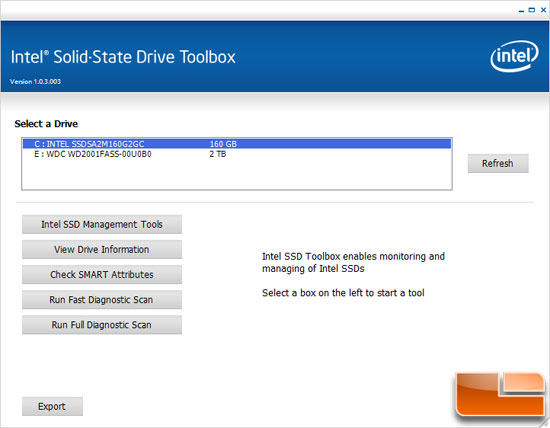
Once you fire up the Intel Solid-State Drive Toolbox, you will see the main menu which is shown above. This screen allows you to see all the hard drives that are installed in your system. As you can see from the screen shot, we have an Intel 160GB SSD (SSDSA2M160G2GC) as the primary and the Western Digital 2TB Black (WD2001FASS-00U00B0) as the storage drive.
The Intel SSD Toolbox provides SSD management tools and information about the drive, including comparing Self-Monitoring and Reporting Technology (S.M.A.R.T.) drive attributes to manufacturer threshold. It provides basic and full diagnostics, along with recommended actions. The Toolbox also features an easy-to-use graphical user interface that will allow end users to schedule and run the TRIM command independent of the operating system. We thought that TRIM command would run in the background without any consumer knowledge, so we asked if Intel had any documentation on when the Windows 7 ATA Data Set Management Commands trim attribute would be functioning. For example is it set to run every hour or it is done constantly? Intel replied that they “don’t have any documentation from Microsoft on how TRIM is run. However using the Intel SSD Optimizer (part of the Intel SSD Toolbox) a user can run TRIM at a scheduled interval in Windows 7, Vista and XP as well.”
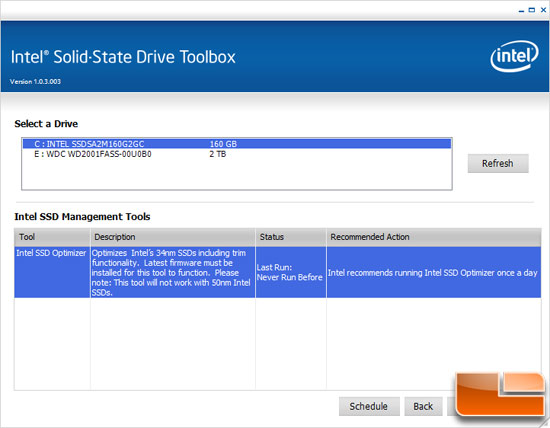
If you highlight the Intel SSD and click the ‘Intel SSD Management Tools’ button on the menu you’ll get to the following screen where you have access to the Intel SSD Optimizer. This tool will optimize the performance of all Intel 34nm SSDs and includes TRIM functionality. This tool will not work with 50nm Intel drives (Gen 1) as those older drives feature controllers that don’t support this newer technology. Intel recommends running the Intel SSD Optimizer once a day, so be sure to schedule the tool to run daily. Now that TRIM is enabled will the life expectancy of the drive change? We asked this question to Intel and the responded by saying that the life expectancy on an Intel SSD does not change with the use of TRIM.
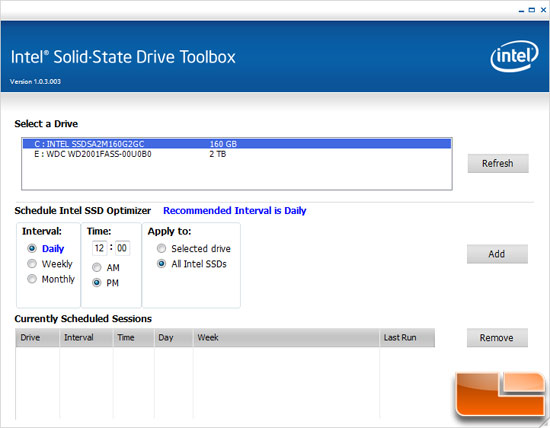
The Intel Solid-State Drive Toolbox has a built-in scheduler that is easy to setup and use. You just need to select a drive and what time the optimizer runs every day to add it to the scheduled sessions. Once you have spent a few seconds setting this up, you shouldn’t have to manually do anything again.
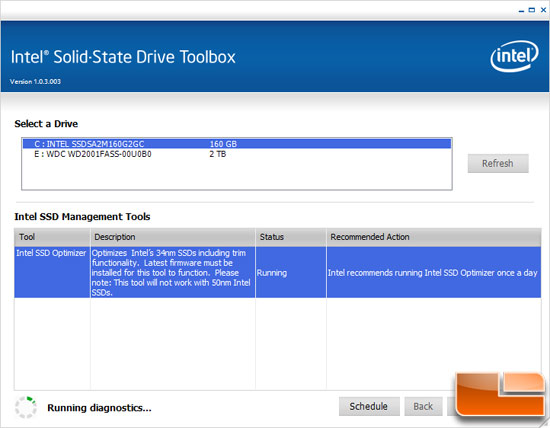
Just for fun we manually ran the Intel SSD Optimizer and were shocked to see that it completed in just a few seconds! The TRIM attribute of the ATA Data Set Management Command, often referred to as TRIM, syncs the operating systems view of deleted files with those that are deleted but not erased on the drive. TRIM tells the SSD which data blocks are no longer in use. This helps stabilize the performance and health of the SSD over time.
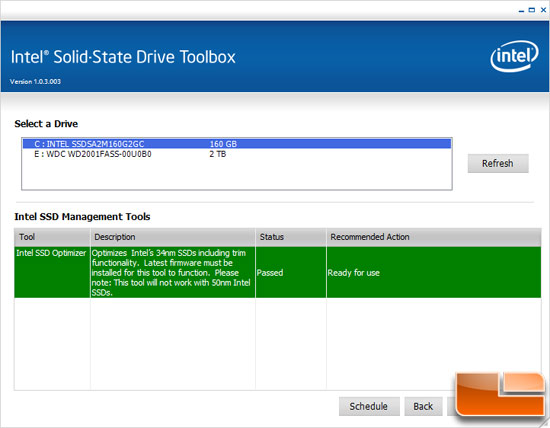
Once the Intel SSD Optimizer does its thing, you’ll see if either the drive passed or failed. As you can tell our drive passed, so let’s get on to testing this new firmware version and to see what the Intel SSD Optimizer can do for performance.

Comments are closed.